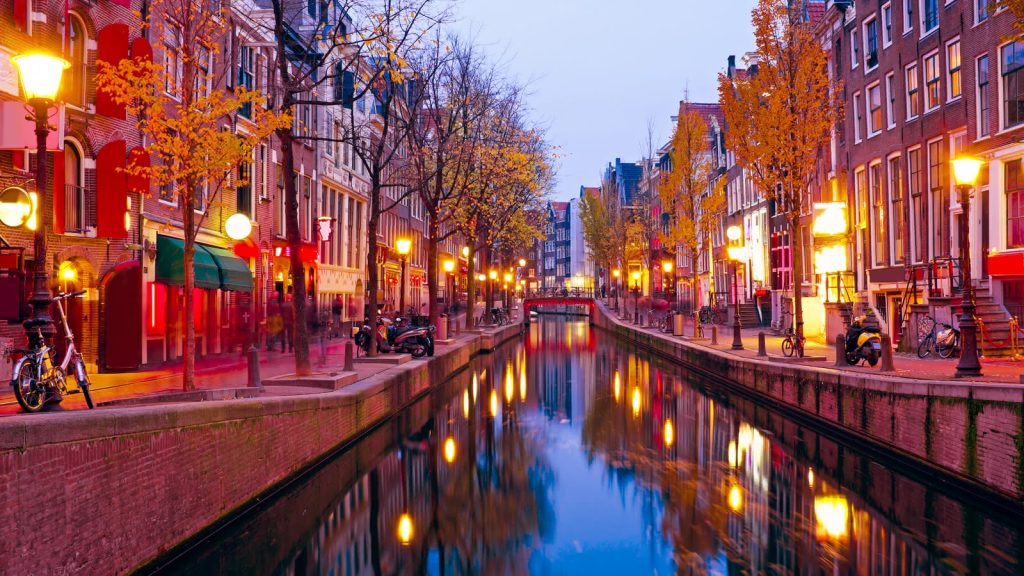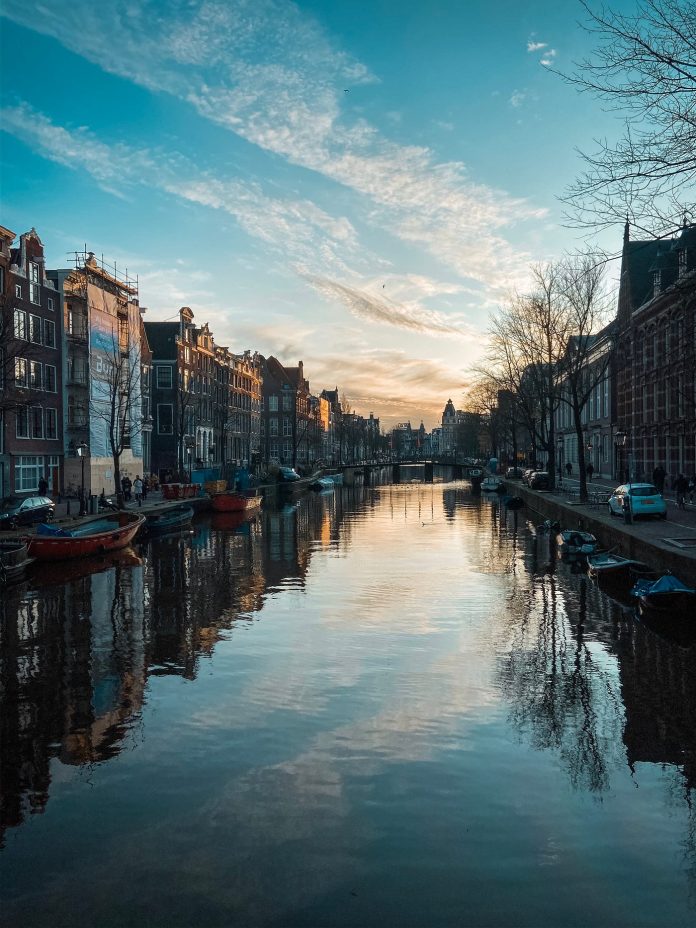Amsterdam is one of the most attractive and exciting cities in Europe, with more canals than Venice and more bridges than Paris. It was founded as a fishing town on wetlands at the mouth of the Amstel River in the 1200s. Its first name was Amstelredamme, which means the dam built on the Amstel River. In the late 19th century, museums, a train station and a concert hall were built in the city. Its commercial ties with Europe and the world have further developed with water channels connecting to the Rhine River and the North Sea.
Dam Square
You are in the heart of the city… This magnificent building you see is the Royal Palace and it has been here since 1655. The building was originally designed by Jacob van Campen as the City Hall. It was reorganized as befitting a palace by Napoleon’s brother Louis Bonaparte. It has been used as a palace ever since. In the square is the Nieuwe Kerk (New Church) and the II Church, which stands out with its whiteness. You also see the National Monument built in memory of World War II.
Amsterdam Central Station
The station was opened in 1889 and replaced the old port, which was the most important symbol of the city, completely eliminating the burden of sea transportation. Amsterdam’s international train connection starts from this station. In addition to being a train station, the building is one of the best examples of 19th century architecture. The magnificent design in the middle section of the station with its twin towers on three artificial islands, supported by more than 8600 wooden piles, looks like a triumphal arch.
Rijk Museum
You will see thousands of rare artifacts in rooms intertwined like a labyrinth. In addition to the works of 15th and 17th century Flemish artists, other legendary artists are also hosted with their works in many halls of the museum. The museum is too big to be visited in one day. It has the largest collection of Dutch art in the world. There is a wide collection here, from the first religious works to the most important works of the Golden Age.
Van Gogh Museum
The museum was opened in 1973. The building is quite modern. The main building was designed by Gerrit Rietveld, while the large circular wing was designed by Kisho Kurokawa. Van Gogh’s works and 800 letters written to his brother Theo are exhibited in the museum. If you examine the works carefully, you will see sections from Van Gogh’s manic depressive life. Van Gogh’s famous works such as ‘The Potato Eaters’, ‘Vase with Sunflowers’, ‘Bedroom in Arles’ and ‘Crows in the Wheat Field’ are exhibited in the museum.
Hermitage Amsterdam
St. The museum, which serves as the Amsterdam branch of the Hermitage Museum in St. Petersburg, was created to explain the riches, reign and magnificent arts of the Russian Tsardom. The story of the museum began in Saint Petersburg in 1764. Russian Empress Catherine the Great decided to create a collection when she purchased 200 paintings at an auction in Berlin. She built an annex next to her winter palace and placed all her works of art there.

Red Light District
Its name comes from the red lanterns that prostitutes serving sailors hung outside their homes. After 1478, prostitution became so widespread that it was necessary to take precautions in this regard. Women who went outside the designated areas were warned with trumpets and whistles and sent back. This area also hosts shops, restaurants and businesses. The neighborhood becomes very colorful in the evenings with entertainment and shows aimed mostly at adults.
rembrandtplein
You are in one of the liveliest squares in Amsterdam. Since the square was used as a butter market in 1878, it was called Botermarkt, but later Rembrandt’s statue was erected and its name was Rembrandtplein. The square displays a colorful appearance with many bars, restaurants and nightclubs. This is a region loved by the public not only today, but since the 1890s.
Plantage
The foundation of the tulip craze period in the Netherlands started with tulips brought from the Ottoman Empire. The tulip arrived in bales of fabric on a ship that brought fabric from Istanbul and docked at the Port of Antwerp in 1562. Mistaking the tulip bulbs in the bales for Ottoman onions, the merchant from Antwerp used most of the bulbs in food and planted the rest in his garden. When spring came, dazzling tulips burst out among the vegetables in the garden. At that time, the Dutch, who became rich from Eastern trade, began to decorate the gardens of their luxurious houses with tulips. Plantage is known as the cultural garden of the city, it is especially beautiful in April.
De Waag
This building is the oldest border house in Amsterdam. De Waag determined the eastern borders of the city with the walls built after the great fire of 1450 and began to be used in 1488. Although it looks very nice with its towers and architecture, it went down in history as the place where public executions took place in the 16th century. Prisoners were waiting for their fate in the towers. In 1691, the large octagonal tower in the middle of the building was added. The upper floor of the building was opened to guilds for meeting purposes.
Oudekerk
The construction of Amsterdam’s oldest community church started in the 13th century. 300 years




